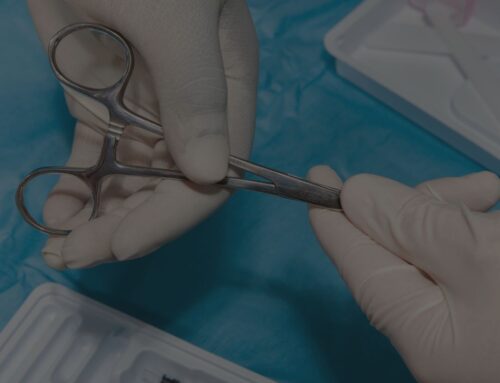
Dear Representative,
On behalf of the intersex youth for whom we advocate, we call on you to oppose H.R. 734, which would subject children and young adults with innate variations in their sex characteristics to discriminatory and potentially humiliating treatment.
Rather than “protect” women and girls in sports, this legislation inverts Title IX’s civil rights protections to subject women and girls in educational athletics programs to intrusive inquiries, improper scrutiny, and discriminatory harassment about the nature of their “reproductive biology and genetics at birth.” What’s more, it would force schools and educational programs at all age and competition levels to police students’ sex characteristics and draw draconian lines based on regressive and unscientific notions of what constitutes sex – or risk losing federal funding. Title IX has protected the ability of all women and girls to participate in school athletics for half a century, and Congress must reject this attempt to turn a powerful and cherished civil rights law that protects all students into a vehicle for discrimination.
Each year, tens of thousands of children with intersex traits are born in the U.S. “Intersex” is an umbrella term for a wide range of innate variations in physical traits – including external genitals, internal sex organs, chromosomes, and hormone function – that do not fit typical binary notions of male and female bodies. An estimated 2% of all people are born with these variations — an incidence rate similar to the proportion of the U.S. population that is Jewish, or Mormon. Despite longstanding recognition of the existence of intersex variations, intersex people in the United States suffer mistreatment and discrimination across a multitude of settings. interACT is a nonprofit organization that employs legal and policy advocacy nationwide to protect the rights of intersex youth. We are the largest and oldest organization in the United States exclusively dedicated to this purpose.
Intersex traits originate from variations in the embryonic development process. A fertilized egg usually (but not always) has two sex chromosomes: XX or XY. For the first few weeks of gestation, XX and XY embryos look the same, but they later develop in different ways depending on genetic and hormonal factors. During typical development of an embryo with XY chromosomes, the gonads become testes; the genital tubercle becomes a penis; and the labioscrotal folds fuse and form a scrotum. During typical development of an embryo with XX chromosomes, the gonads become ovaries; the genital tubercle becomes a clitoris; and the labioscrotal folds develop into the outer labia.
There are many ways in which this “typical” process can vary, resulting in a wide range of intersex traits. At birth, intersex children are usually assigned either male or female – based on some combination of their genital appearance, internal organs, and chromosomes, or based solely on their visible characteristics if their intersex variation is not yet apparent. Later, at puberty, hormones secreted by the testes or ovaries cause the expression of secondary sex characteristics such as breast development, body hair, musculature, and depth of voice. The characteristics developed at this time may or may not align with stereotypes associated with the assigned sex, and may differ from what would be expected given the person’s chromosomes.
Intersex traits may present at different ages. For example, variations in external genitalia may mean a child’s intersex variation is recognized at birth, but variations in internal organs or sex chromosomes may not become apparent until puberty or later. Regardless of when a person’s intersex variation is discovered, their traits develop as a result of underlying factors that are innate, or present at birth.
H.R. 734, which purports to define each individual’s sex on the basis of their so-called “reproductive biology and genetics at birth,” would prohibit many intersex students from participating in sports. For some intersex individuals, their “reproductive biology” and their “genetics” may be perceived as indicating “opposite” sex categories; others may have one or more sex traits that do not align with stereotypes associated with either binary sex category. Although the impermissibly vague standard set forth by H.R. 734 does not appear to acknowledge the existence of intersex youth, it will certainly, and negatively, impact them. Worse yet, this misguided legislation would punish schools and programs that simply permit intersex and transgender students to play on teams that align with their gender identity, rendering these schools and programs ineligible for federal funding.
To illustrate the barrier this legislation will represent for intersex students, consider “Jane,” a hypothetical student with complete androgen insensitivity. Jane was assigned female at birth and has always identified as a girl. Jane’s external genitalia and secondary sex characteristics align with what is considered typical for female bodies and she also has internal testes and an XY chromosome pattern. What label would H.R. 734 impose on Jane’s “sex”? Her “reproductive biology” does not neatly align with stereotypical notions of male bodies or of female bodies – nor do her “genetics,” given her combination of XY chromosomes and a variation in her androgen receptor gene that causes her body not to respond to the testosterone she produces. (Relatedly, while her testosterone levels are technically within the same range as cisgender boys’ hormone levels, it is functionally as if she has no testosterone because her body’s cells cannot detect or respond to any androgens as a result of her specific intersex variation.)
What is Jane to do if she wishes to play school sports? What is her school to do if administrators are aware of Jane’s variation, and they want to be in compliance with an enacted H.R. 734?
H.R. 734 provides intersex students, and their well-intended educators, with no answer. Rather, it blithely assumes that the sex traits it vaguely sets forth – “reproductive biology and genetics at birth” – are exclusively binary, and that they will always align and always point clearly to either “male” or “female.” These assumptions are false and unscientific, and their adoption into Title IX is unconstitutional discrimination on the basis of a person’s sex characteristics, in violation of the Equal Protection Clause.
Title IX was enacted to promote equality and to ensure the availability of equal educational opportunities for all students, including in athletics programs. H.R. 734 is in direct conflict with both the spirit and the actual impact of Title IX, and interACT urges our elected representatives to reject it outright.
You can access a PDF of this letter here.






